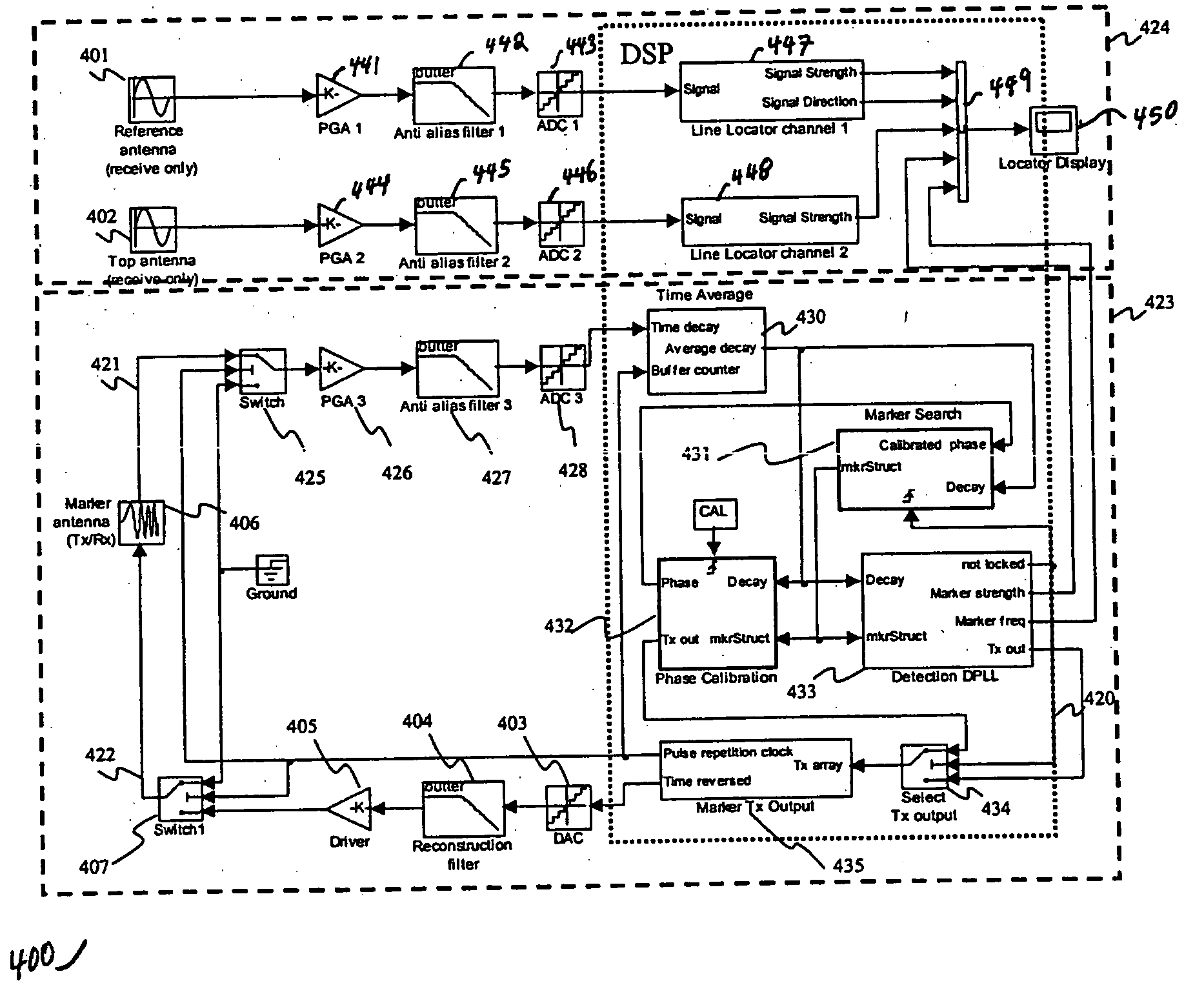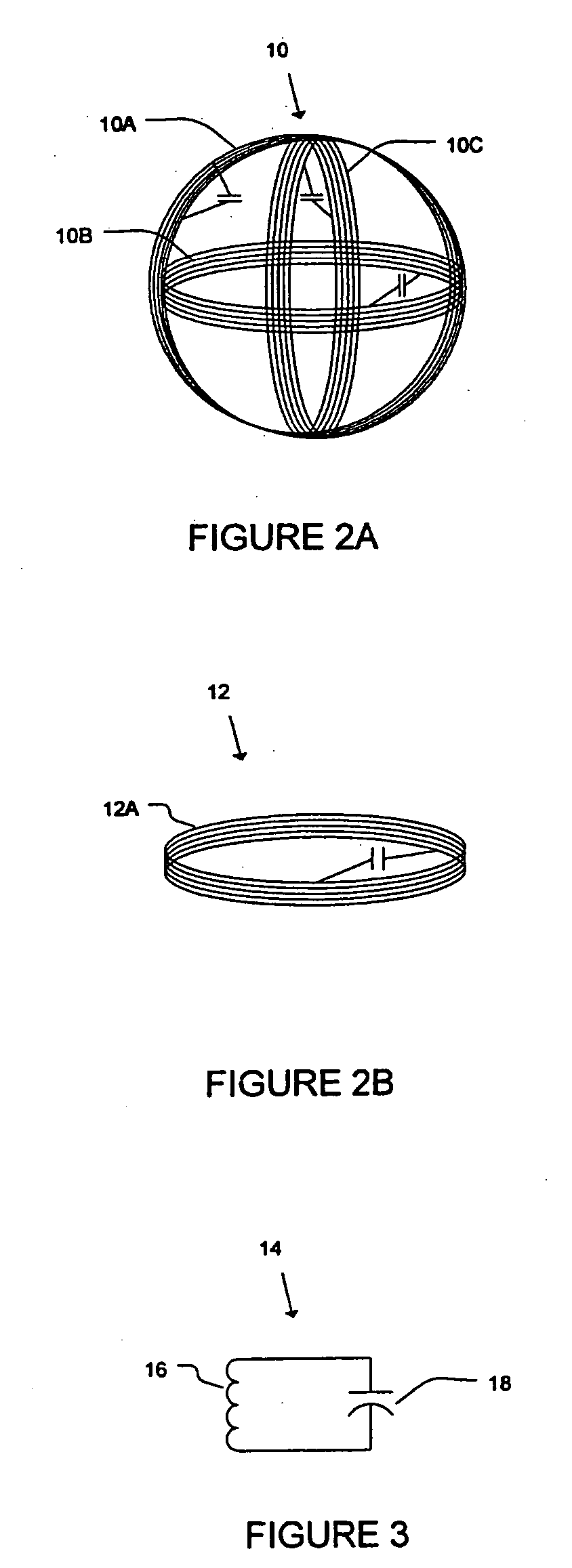Method and apparatus for digital detection of electronic markers using frequency adaptation
a technology of electronic markers and frequency adaptation, applied in mechanical devices, using reradiation, instruments, etc., can solve the problems of inability to identify and distinguish among various types of utility conduits and conductors, and inability to use line locator devices to locate non-conductive lines. , to achieve the effect of high-quality identification of marker types
- Summary
- Abstract
- Description
- Claims
- Application Information
AI Technical Summary
Benefits of technology
Problems solved by technology
Method used
Image
Examples
Embodiment Construction
[0034] Generally, electronic markers consist of two types, namely, active markers and passive markers. Active markers, radiate a signal detectable at the surface; however, they require a power source. Passive markers, on the other hand, require no power source and become active when induced by an external electromagnetic field, which can be generated with a portable power source.
[0035] A marker locator is a device for detecting and determining the location of concealed or buried markers. Passive markers typically include a multi-turn wire loop (coil) tuned with a capacitor to a pre-determined resonant frequency. A flexible implementation of an electromagnetic marker locator is described in U.S. patent application Ser. No. 10 / 227,149, “Procedure and Device for Determining the Location of Buried Electronic Markers,” by Hubert Schlapp and Richard Allin, which is herein incorporated by reference in its entirety. A fully digital implementation of an electromagnetic line locator is descr...
PUM
 Login to View More
Login to View More Abstract
Description
Claims
Application Information
 Login to View More
Login to View More - R&D
- Intellectual Property
- Life Sciences
- Materials
- Tech Scout
- Unparalleled Data Quality
- Higher Quality Content
- 60% Fewer Hallucinations
Browse by: Latest US Patents, China's latest patents, Technical Efficacy Thesaurus, Application Domain, Technology Topic, Popular Technical Reports.
© 2025 PatSnap. All rights reserved.Legal|Privacy policy|Modern Slavery Act Transparency Statement|Sitemap|About US| Contact US: help@patsnap.com



